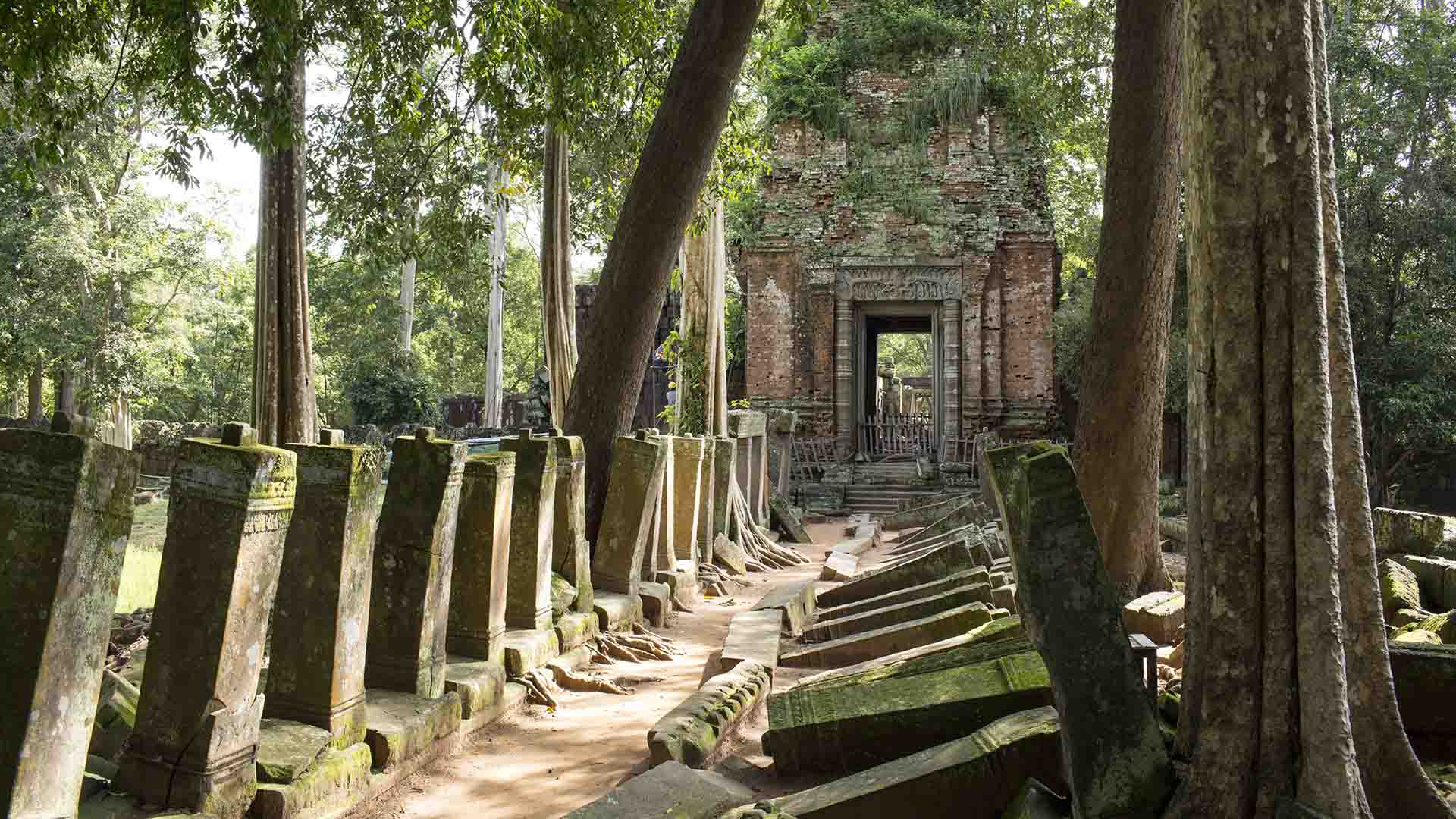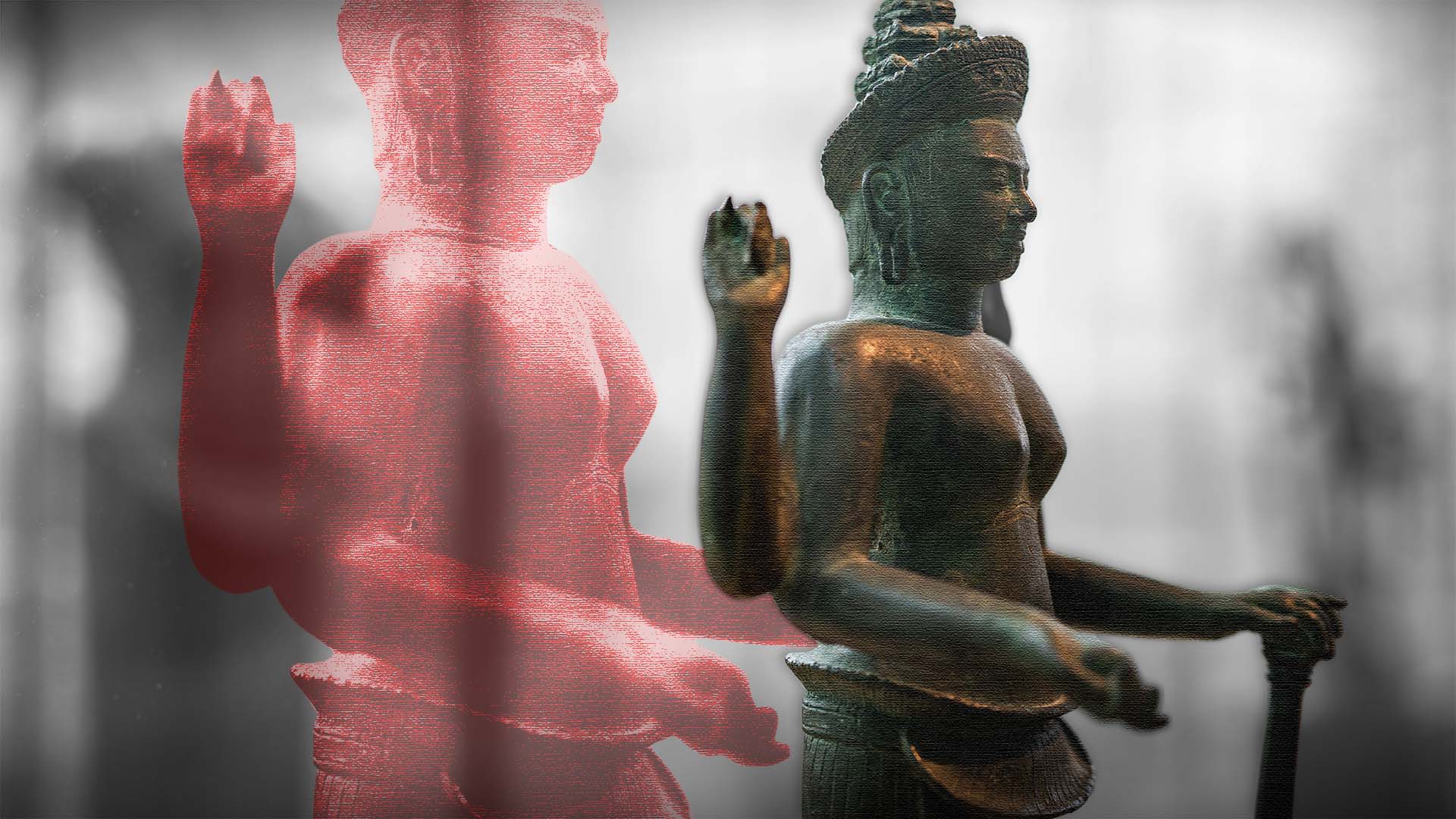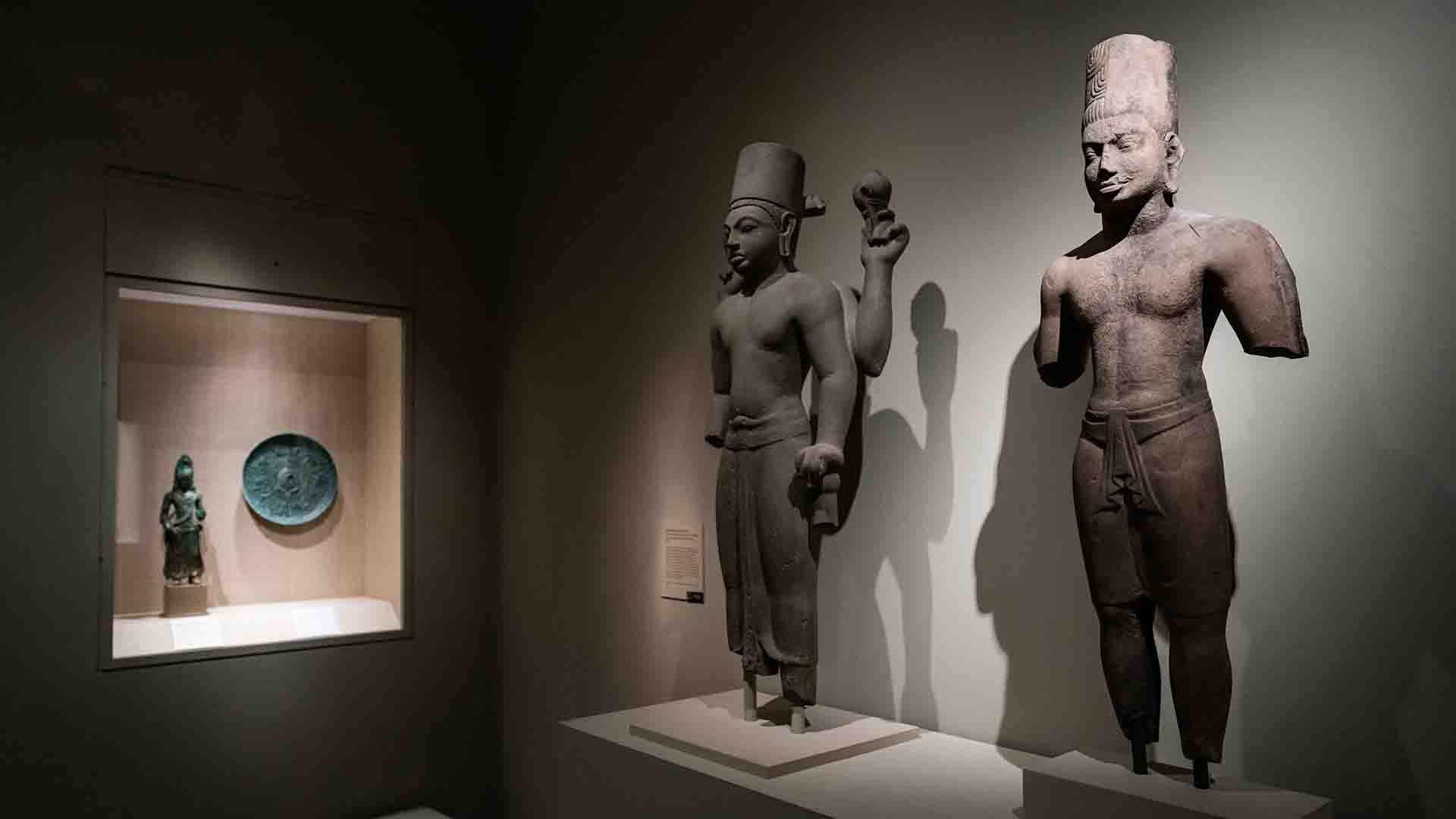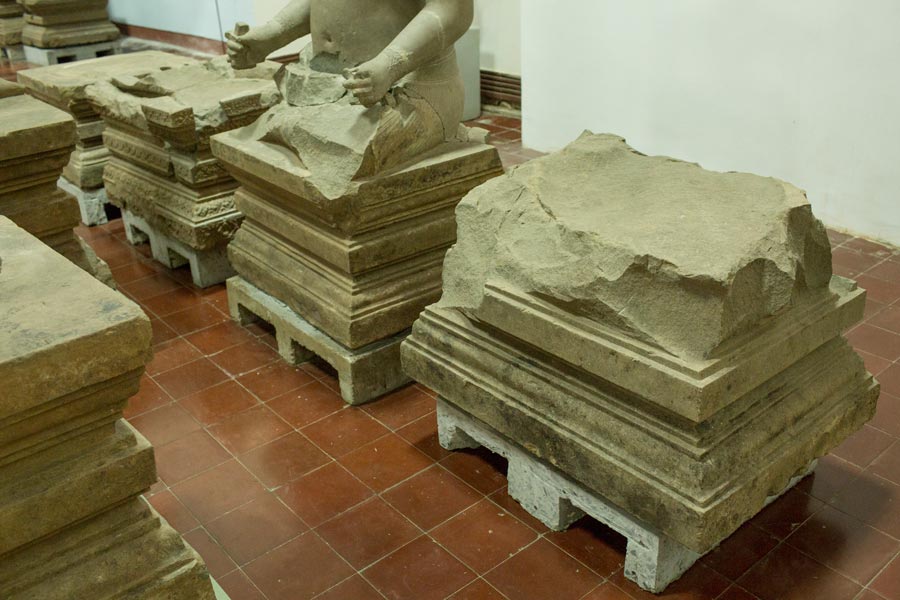Decades after they were hacked from temples and other historical sites, four ancient statues from the Denver Museum of Art are finally heading home.
The museum has agreed to turn over the relics to the U.S. government, which plans to return them to their native Cambodia, according to a forfeiture complaint filed Monday in the Southern District of New York’s federal court. The items include a likeness of the goddess of transcendent wisdom called the Prajnaparamita and another of the sun god Surya
The repatriation announcement comes amid mounting pressure by U.S. and Cambodian authorities on prominent art institutions to reexamine their collections of Khmer art, especially pieces acquired over decades of unrest in the country when looters stole vast numbers of culturally significant antiquities. And it closely follows an investigation by the International Consortium of Investigative Journalists and The Washington Post, which reported last month that 10 museums—among them the Denver Art Museum—hold 43 relics in their collections linked to a notorious indicted art dealer, Douglas Latchford.
“I am delighted by the upcoming return of these four highly significant cultural objects to Cambodia,” said Phoeurng Sackona, the Cambodian Minister of Culture and Fine Arts. “Each one has a fascinating story and priceless value to our nation.”
In recent years, the Cambodian government has launched a vigorous effort to gather information on hundreds of valuable cultural artifacts the country says were stolen. Many of these pieces now reside in the U.S., Western Europe and Australia. Federal authorities said that the four pieces in Denver were identified as stolen by the former leader of a major Cambodian looting team that removed ancient artifacts when the country was governed by the genocidal Khmer Rouge regime in the 1970s. The museum acquired the relics from Latchford between 2000 and 2005, according to the forfeiture filing.
Latchford was indicted in 2019 for allegedly looting Cambodia’s cultural heritage on a grand scale. The case against Latchford was dropped last year after he died. Over his decades of trading antiquities, Latchford amassed one of the world’s largest private collections of Khmer treasures, mostly Hindu and Buddhist sculpture.
Drawing from the Pandora Papers, a massive cache of leaked records obtained by ICIJ and shared with partners around the globe, ICIJ and The Washington Post reported that Latchford and members of his family used offshore entities in the island of Jersey and the British Virgin Islands to hold numerous Khmer relics. A cross-newsroom reporting team led by ICIJ and The Washington Post then embarked on a hunt for items with Latchford links that had landed in the collections of museums and private individuals.
The 43 relics identified by the team passed through the hands of Latchford or associates who prosecutors say helped him sell looted art. Other prominent museums with Latchford-linked relics in their collections include New York’s Metropolitan Museum of Art, London’s British Museum and the Cleveland Museum of Art.
Prosecutors said that Latchford played a key role in selling the four pieces named in Monday’s filing to the Denver Art Museum.
In a statement to The Post and ICIJ, the Denver Art Museum said it had reached out to Cambodian officials directly after Latchford’s 2019 indictment and that prosecutors taking possession of the four pieces is “the next step in the process to return these artworks to Cambodia.”
In July, The Post and ICIJ first reached out to the Denver Art Museum about six relics linked to Latchford. In September, the museum removed the relics from the museum’s collection.
The Denver Art Museum isn’t the only institution in contact with authorities about Cambodian relics. Last month, New York’s Metropolitan Museum of Art met with prosecutors to discuss potentially looted relics within its collection. The meeting came just weeks after ICIJ and The Post reported that the Met holds more than a dozen pieces linked to Latchford and his associates.
The four relics being returned from Denver are of enormous cultural value, according to Bradley J. Gordon, one of the lawyers representing Cambodia’s Ministry of Culture. One of the items, a prehistoric bronze bell, is believed to belong to a set of 12 bells looted from Prasat Province, north of the capital Phnom Penh. The bells are extremely rare, and were believed to have been used to call warriors to battle, according to Gordon.
Latchford provided falsified documents for at least some of the relics being returned, according to Monday’s forfeiture case.
One of them, a goddess of transcendent wisdom called the Prajnaparamita, whose face archaeologists believe was crafted to resemble the wife of the former Khmer king Jayavarman VII, was likely looted from Takeo province in the south of Cambodia, according to Gordon. The Prajnaparamita was specifically mentioned in the Pandora Papers investigation. Latchford gave conflicting documents to the Denver Art Museum about the relic’s ownership history at the time of its acquisition.
The other relics to be repatriated include the bronze bell, a sandstone sculpture of a standing Surya, the sun god, and a lintel depicting the sleep of the Hindu god Vishnu and birth Brahma. Both the lintel and Surya are exceedingly rare relics, and were believed to have been stolen from a temple on Kulen mountain near Siem Reap Province, according to a Cambodian ministry of culture press release. In their recent filing, prosecutors say that Latchford sold the Prajnaparamita statue to the Denver Art Museum for $358,000.
The Department of Justice declined to comment on the case.
“We continue to gather extensive evidence of the looting of our treasures, and improper possession of them by others,” Sackona said. “We encourage museums and private collectors with Khmer cultural properties to reach out to the Ministry to share provenance documentation and to move towards voluntary repatriation of our Cambodian treasures.”




